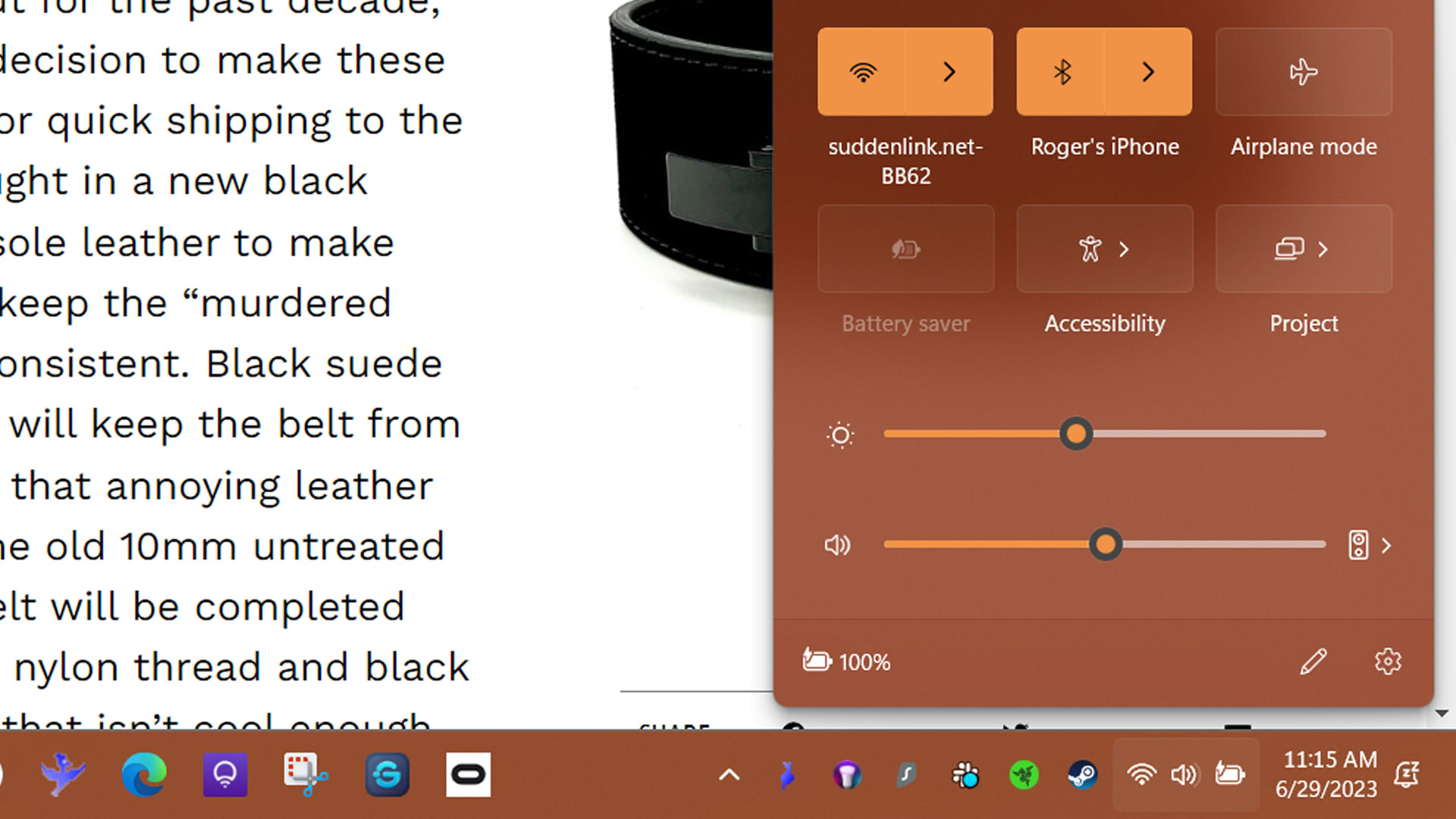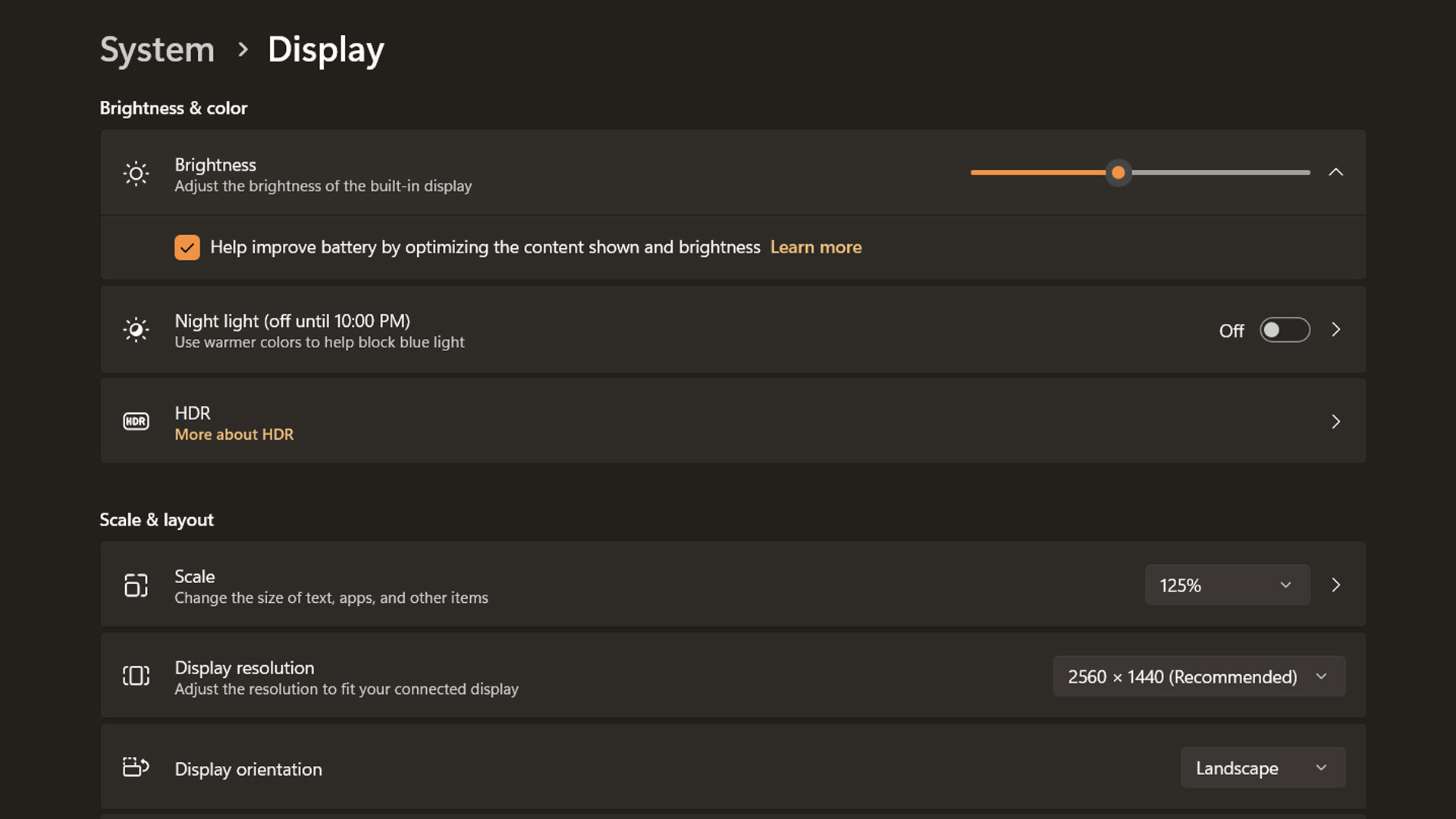Affiliate links on Android Authority may earn us a commission. Learn more.
How to change brightness in Windows 11 (and 10)
Published onDecember 26, 2023
Tweaking screen brightness is one of the most basic aspects of using a PC, yet there’s a little more nuance to it in Windows than you might expect. Below we’ll explain how to use brightness settings in Windows 10 and 11, including multiple automatic options.
QUICK ANSWER
To quickly change brightness on Windows 11 laptops:
- Click the Network icon (a Wi-Fi symbol) on the right side of the taskbar.
- Click and drag the Brightness slider to the left or right.
JUMP TO KEY SECTIONS
How to change your screen brightness in Windows
The first thing to know is that if your PC is hooked up to an external monitor, you probably won’t see a brightness slider anywhere in Windows unless it’s part of a monitor maker’s app. In the absence of that control, the only way to change an external monitor’s brightness is through its physical buttons.
If you’re using the built-in display on a Windows laptop or tablet, you’ve got a couple of ways of manually adjusting levels. The first is through keyboard shortcuts — typically you’ll see two sun icons in the function key row (on F8 and F9, in the example of a Razer Blade 17), and if you combine these with a Fn (Function) modifier key, you can raise or lower Windows brightness levels without clicking anything.
Software controls vary slightly between Windows 10 and 11:
In Windows 11

- Click the Network icon (a Wi-Fi symbol) on the right side of the taskbar. Despite the name, this pops up a general control panel.
- Click and drag the Brightness slider to the left or right.
In Windows 10
- Click on the taskbar’s Action Center icon, which looks like a speech bubble.
- Click and drag the Brightness slider left or right. Note that a slider will only appear in versions 1903 or later of Windows 10.
- If you’re using an older version of Windows 10, you’ll have to use Settings > System > Display to change brightness.
How to enable or disable automatic screen brightness in Windows

Some Windows laptops support changing brightness automatically based on ambient lighting conditions. You won’t go blind when you open your laptop at night, in other words.
To enable or disable automatic brightness:
- Open the Settings app.
- Navigate to System > Display.
- Under Brightness, look for a checkbox that says Change brightness automatically when lighting changes. If it’s missing, your laptop doesn’t support the feature. You can still use the manual slider to refine baseline brightness.
- Some Windows 11 laptops offer a different checkbox, Help improve battery by optimizing the content shown and brightness. This is called content adaptive brightness, and tries to save battery life by adjusting both brightness and contrast as your onscreen content changes. You probably don’t need full brightness in a movie scene that’s well-lit, for instance.
Most people should enable automatic brightness options if they’re not already on, but there are exceptions. In some cases, content adaptive brightness may be noticeable and distracting. For photo, video, rendering, and illustration professionals, any kind of automatic brightness can affect color accuracy and should probably be shut off during work hours.
FAQs
Most likely it’s because you’re using a PC connected to an external monitor. In that situation you’ll need to use the monitor’s own controls, whether physical or software-based.
You have some form of automatic brightness enabled. If that’s bothering you, go to Settings > System > Display and toggle off Change brightness automatically when lighting changes and/or Help improve battery by optimizing the content shown and brightness. If both options are present, it’s probably the latter that’s giving you trouble.